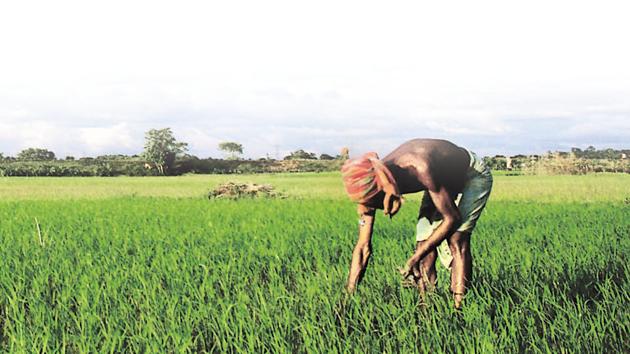Upper caste farmers stand to gain more from loan waivers
Access to formal credit can be a major game-changer in determining farm-incomes. It is to be expected that richer farmers would find it easier to avail of formal credit lines.
What ails Indian farmers? The answer to this question is often mired in ideological quarrels. Some blame a lack of reforms in agricultural markets, while others accuse the state of not doing enough to support farming. Systemic issues are often ignored during such polarised exchanges. Unequal access to credit is one such issue.

In 2013, more than a fourth of the total credit taken by Indian farmers came at interest rates of 36% per annum (pa). This is because these loans had been taken from private money lenders (PMLs) instead of formal financial institutions. With the climatic uncertainties associated with agriculture in India, the downside risks of such highcost credit can be devastating.
Access to formal credit can be a major game-changer in determining farm incomes. It is to be expected that richer farmers would find it easier to avail formal credit lines. Land is among the most commonly used collateral for farm-credit. Given the fact that nature of landownership follows caste-hierarchies in India, upper caste farmers have an inbuilt advantage on this count.
Is this advantage only economic in nature though? An Economic and Political Weekly paper by Chirala Shankar Rao, an assistant professor at the Council for Social Development, Hyderabad, suggests that this might not be the case.
The paper is based on calculations using unit-level data from the 2013 All India Debt and Investment Survey of the National Sample Survey Office (NSSO). This is the latest available data. It gives a break-up of credit from three main sources: scheduled commercial banks (SCBs) and cooperatives among formal sources, and private money lenders (PMLs) among informal sources; by caste and class (by size-class of operated land) among Indian farmers.
These three sources account for more than two-thirds of all loans taken by farmers.
Almost half (45.8%) of India’s farmers are from Other Backward Classes (OBCs). Scheduled Tribes (ST) and Scheduled Castes (SC) comprise of another 14.5% and 13.5%, while others (upper castes) have a share of 26.1%. More than 85% of India’s farmers are either small (0.1 to 1 hectare) or marginal (1.1 to 2 hectares) in nature. The share of semi-medium (2.1 to 4 hectares), medium (4.1 to 10 hectares) and large (greater than 10 hectares) farmers is 10%, 4.2% and 0.6%, respectively.
As is to be expected, loans from PMLs have the biggest share in the credit portfolio of farmers with low land ownership. As they are unlikely to have anything to offer in terms of collateral, formal sector credit would be difficult to come by. Since SCs have the biggest share of such farmers, the share of PMLs in their credit portfolio is also the highest.
However, data also shows that even among poorer farmers, the credit portfolio of upper caste farmers has a greater share of formal sector lending. This helps the upper caste farmers to reduce their reliance for highcost credit from PMLs.
To be sure, rich SC farmers also do better when it comes to accessing formal credit. Among large farmers, SCs have a bigger share of SCB lending in their credit portfolio than even upper castes. This could be a result of positive discrimination in disbursal of bank credit due to government regulations.
Among the two major sources of formal credit analysed in the paper, upper caste farmers enjoy a bigger advantage in accessing credit from cooperative banks.
A 2013 paper by Sunil Mitra Kumar from University of East Anglia explains why this might be the case. According to Kumar, upper castes hold a lot of influence in cooperative banks at the district level, which is where crucial decisions about loan distribution are made. The paper found that upper caste advantage in accessing cooperative credit was insignificant in areas where OBCs dominated.
An upper caste bias in disbursal of formal sector farm-credit discriminates against threefourths of farmers in India.
This is bound to be a major roadblock to unleashing entrepreneurial energies of farmers at the grass-root level.
These numbers also tell us that upper caste farmers are more likely to gain from policies such as farm loan waivers, as they have a bigger share of formal sector credit.





